Karamu Meets Coffee
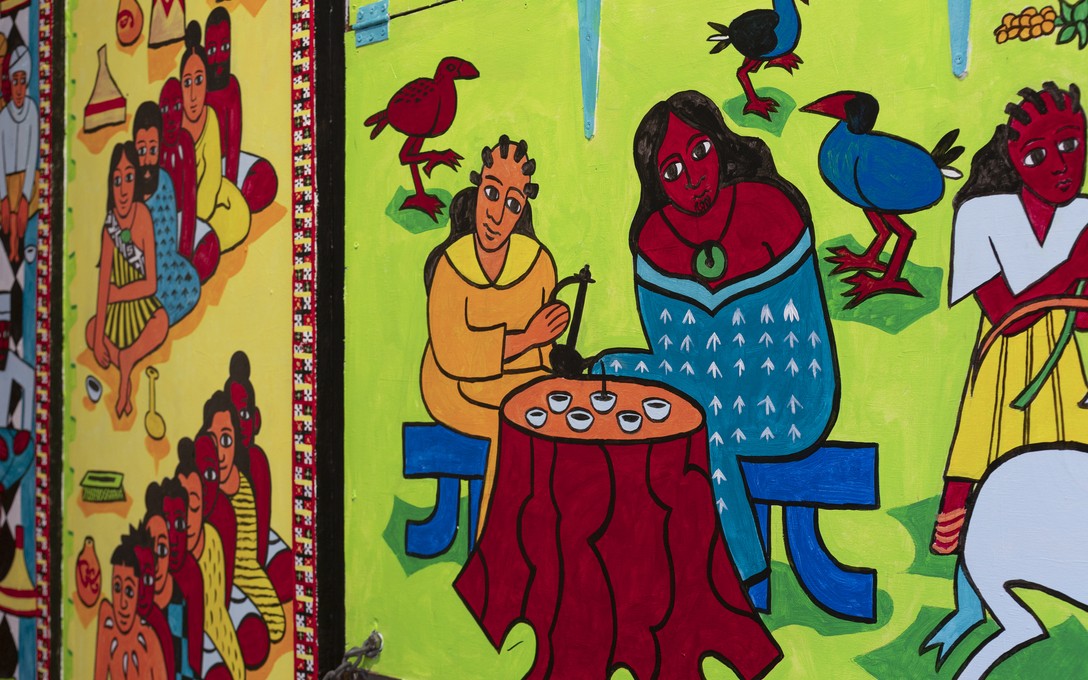
Keelin Bell, Karamu Meets Coffee, 2025. Photo courtesy of Cheska Brown.
now on
1 Jun
2025
–
1 Jun
2026
Keelin Bell
In 2025, Enjoy Contemporary Art Space partnered with our neighbour Mother of Coffee Ethiopian restaurant to commission a new mural between our premises. From an open call for proposals, we jointly selected Keelin Bell (Ngāti Maniapoto, Ngāti Porou, Ngāpuhi).
Keelin Bell's murals Karamu Meets Coffee and Angels Over Pōneke reflect a deep commitment to whakapapa, acknowledging the many layers of history, connection, and future potential embedded in place. In Karamu Meets Coffee, the alleyway between Enjoy and Mother of Coffee becomes a living canvas where the whakapapa of the whenua is brought forward as an active thread binding past to present. The mural weaves together narratives of Te Aro Pā, once a thriving site of agriculture and exchange, with stories from Ethiopia, the birthplace of coffee, foregrounding the indigenous knowledge systems of both cultures. The act of sharing kai and mātauranga across oceans becomes a form of hakari, a feast of relationship and reciprocity.
In another mural, Angels Over Pōneke, the angel icon of Mother of Coffee hovers over the city like kaitiaki, three atua-like figures floating above the familiar landscape of Te Whanganui-a-Tara. The view orients itself east toward Tangi Te Keo (Mt Victoria), reminding us that the whenua continues to speak. Coffee shrubs frame the skyline, anchoring the global to the local, and the present to ancestral lineages.
Together, these works by Keelin are a form of visual whakawhanaungatanga, bringing people together through shared stories, honouring the spiritual and cultural resonances between Māori and Ethiopian worldviews. They call to sustain a relational future built on care, memory, and mutual respect. In the heart of the city, Bell invites us to pause, listen, and remember that the whenua holds all our stories.
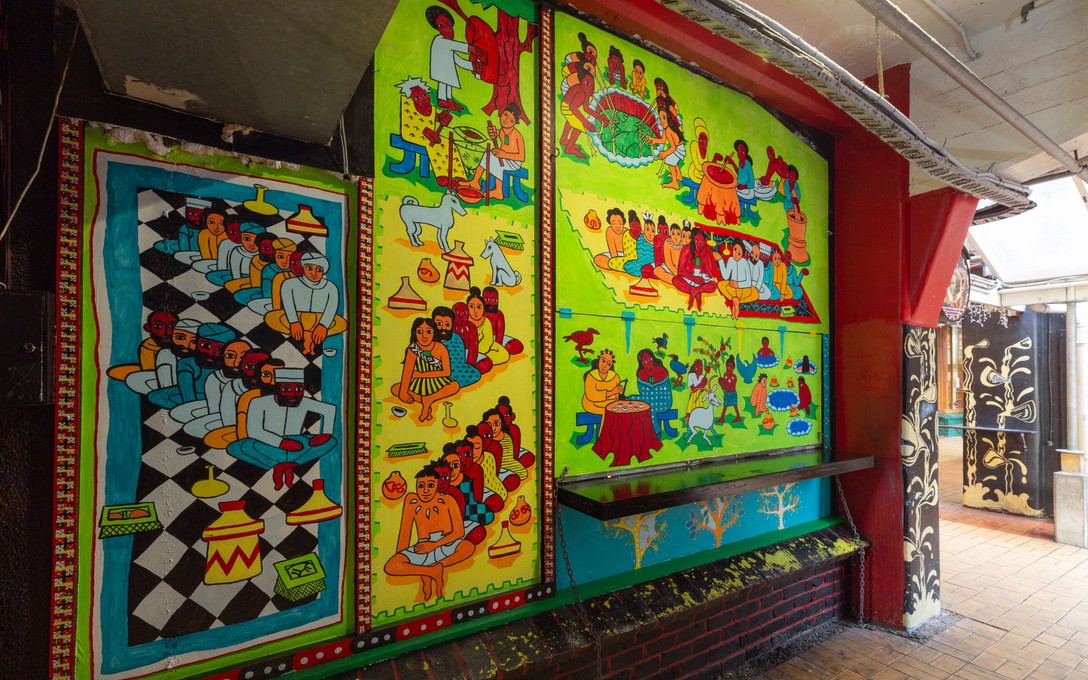
Keelin Bell, Karamu Meets Coffee, 2025. Photo courtesy of Cheska Brown.

Keelin Bell, Karamu Meets Coffee, 2025. Photo courtesy of Cheska Brown.
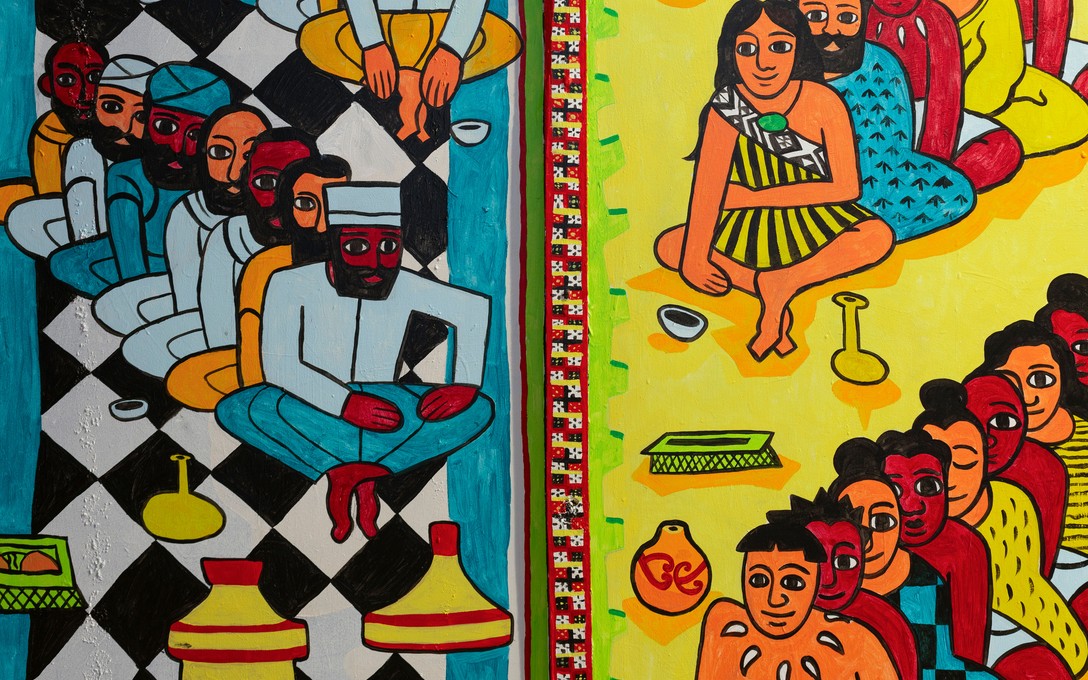
Keelin Bell, Karamu Meets Coffee, 2025. Photo courtesy of Cheska Brown.
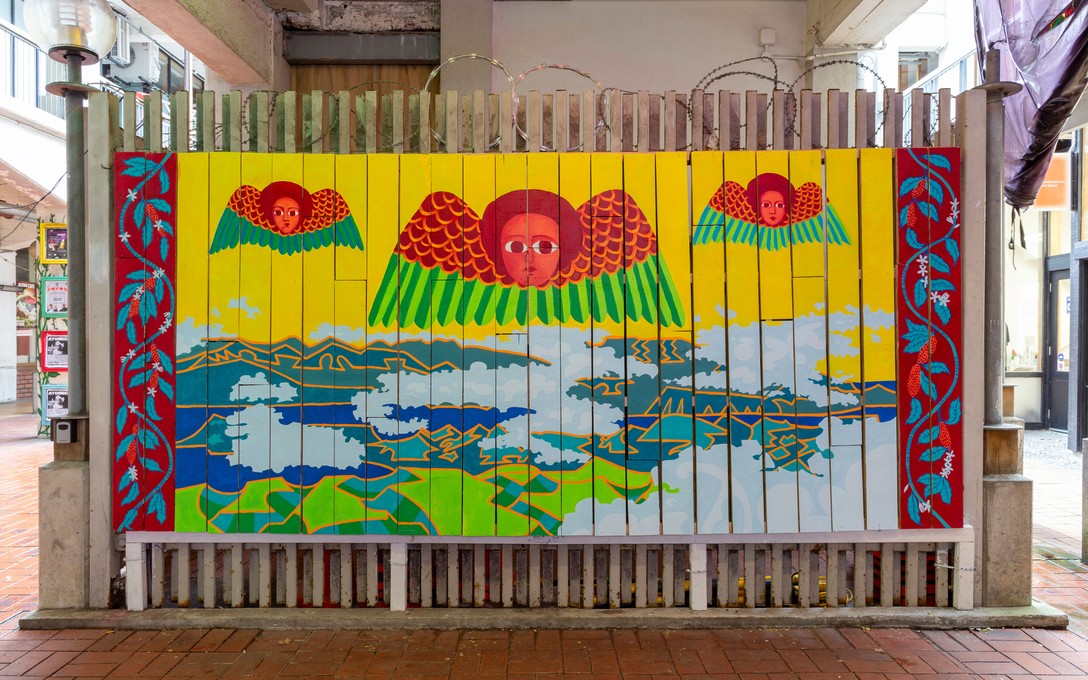
Keelin Bell, Angels Over Pōneke, 2025. Photo courtesy of Cheska Brown.
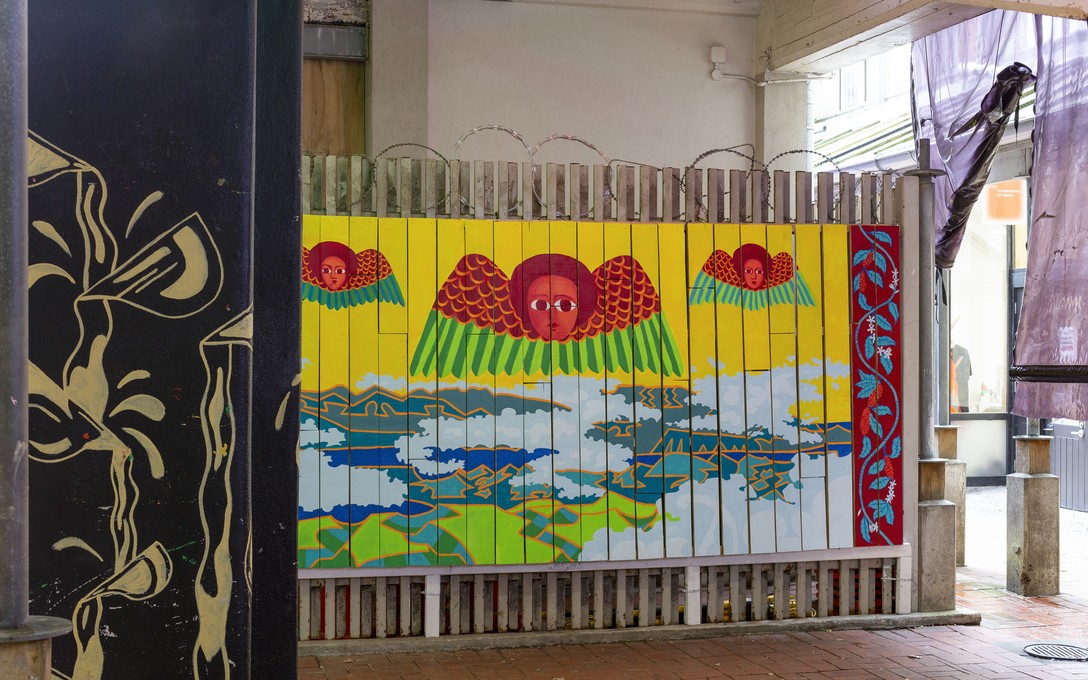
Keelin Bell, Angels Over Pōneke, 2025. Photo courtesy of Cheska Brown.
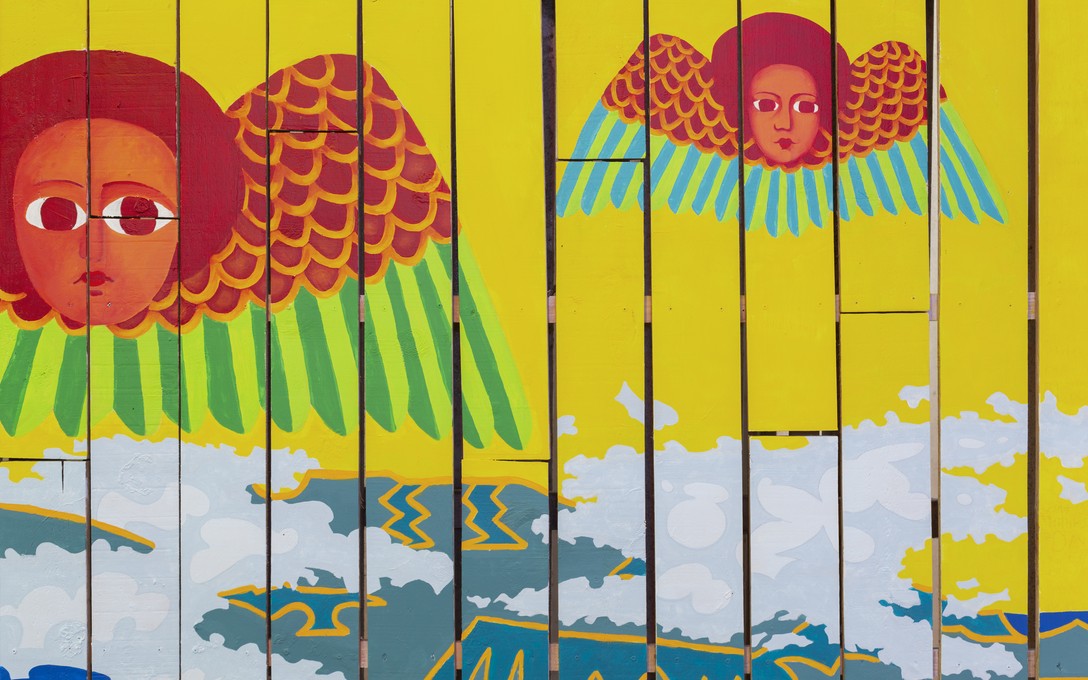
Keelin Bell, Angels Over Pōneke, 2025. Photo courtesy of Cheska Brown.
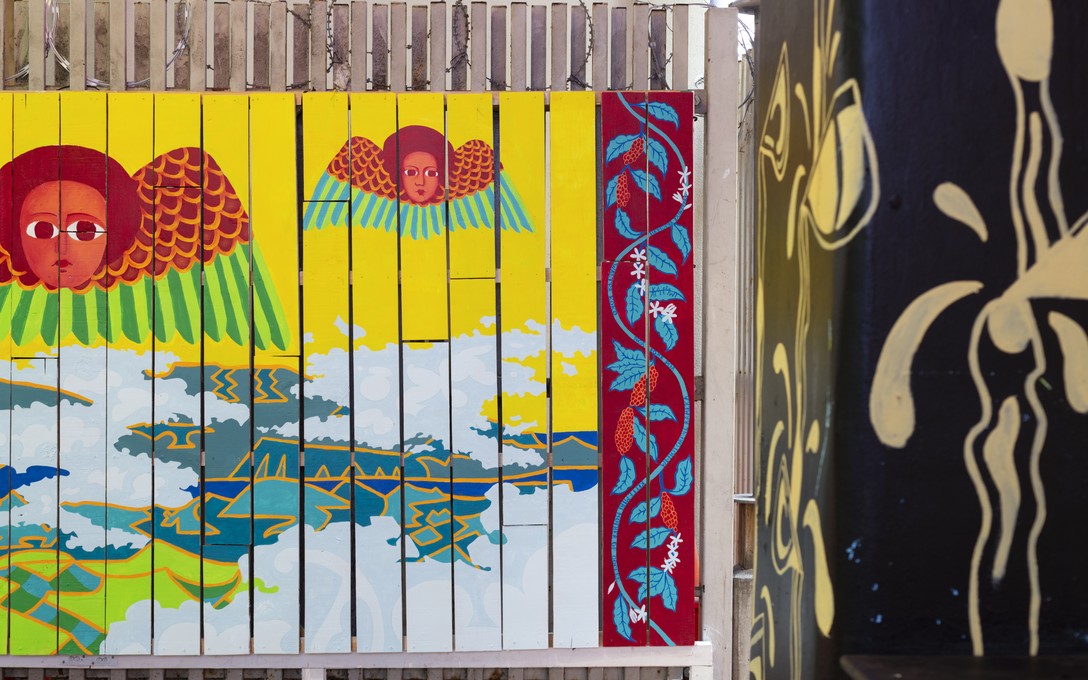
Keelin Bell, Angels Over Pōneke, 2025. Photo courtesy of Cheska Brown.
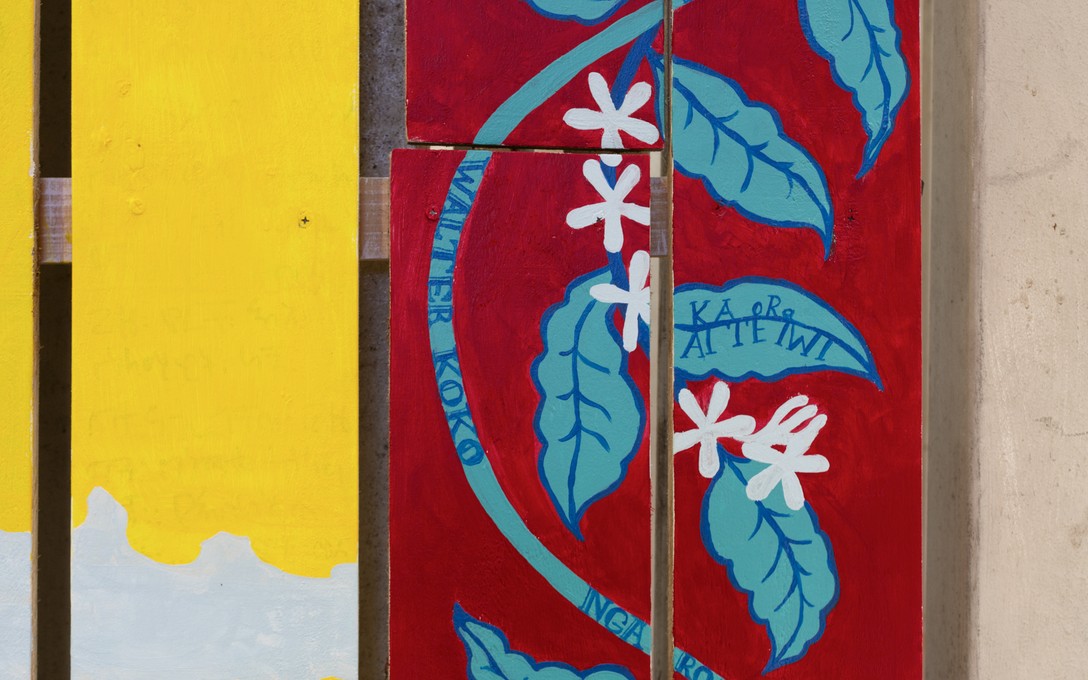
Keelin Bell, Angels Over Pōneke, 2025. Photo courtesy of Cheska Brown.
Keelin Bell (Ngāti Maniapoto, Ngāti Porou, Ngāpuhi) is a multi-disciplinary artist whose practice centres on sharing pūrakau with the community through vibrant, engaging illustrations. Through his work, Keelin strives to celebrate and preserve mātauranga Māori in fresh and dynamic ways.
Ngā mihi nui ki a koutou Bella, Emily, Hāmuera, Leilani, Ngāroma, Rosie, Ruby, Walter and Wi for their help with the mural.
An Ethics of Witnessing
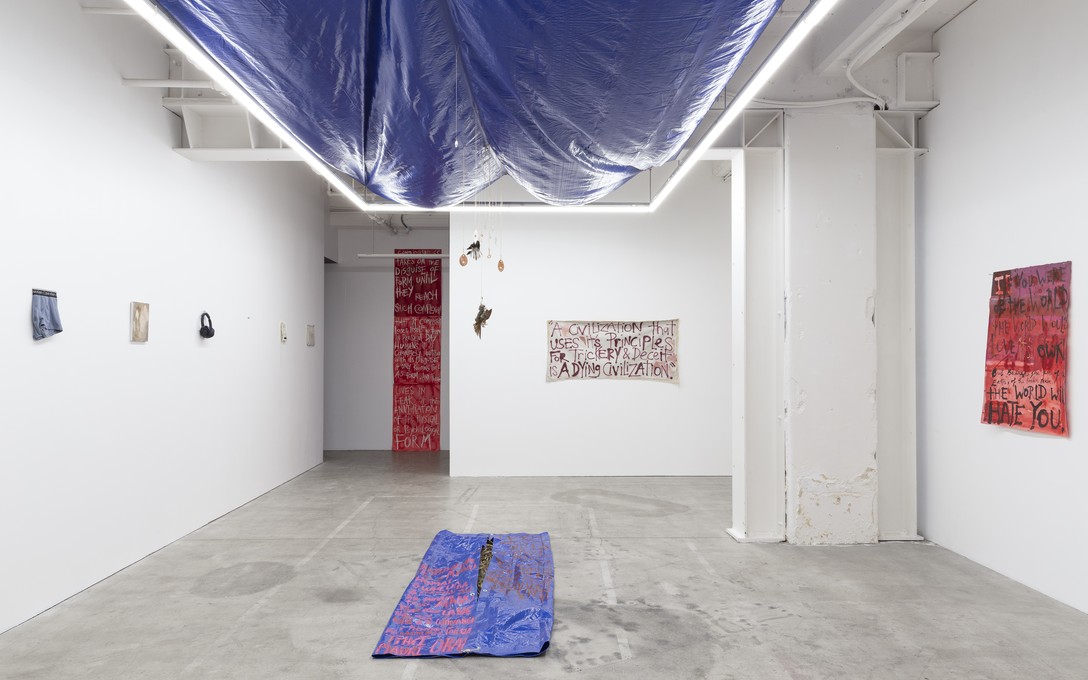
The Ethics of Witnessing, installation view. Image courtesy of Cheska Brown.
now on
5 Jul
–
16 Aug
Aroha Matchitt-Millar, Fetishini, Frankie Matchitt-Millar, p Walters
Drawing from Roberto Esposito’s theory of Immunitas, the exhibition critiques the societal urge to immunise or protect itself by way of exclusion, through institutions such as borders, prisons, and medical systems. These colonial systems of control determine who gets to participate in society and who doesn’t, whose lives are preserved and whose are disposable. The artists in An Ethics of Witnessing map systems that govern the body, who is grieved and who is forgotten. Witnessing becomes a political act, a practice of staying present with what institutions may hope to erase.
The ideas contemplated in An Ethics of Witnessing resonate with the histories of AIDS in Aotearoa. The works echo a whakapapa of care networks, activist resistance, and the cultural labour of remembrance in the face of stigma and neglect. An Ethics of Witnessing holds space for what is unfinished, and acts as a meditation on our histories. In this context, queerness is positioned as a relational force: a vital messiness grounded in the ethics of proximity.
Aroha Matchitt-Millar has drawn from their practice of skinning manu, research into manu pōria, jewellery adornment and their own body for Tīwaiwaka takamiri turuma, he tangata kaikino. In pre-colonial times, manu pōria were typically made from pounamu or bone and used to domesticate birds. For this series of pōria, Matchitt-Millar uses copper and silver to map and measure the orifices of their body, with two manu—native an non-native—suspended with muka between two tarps, one of which contains rotting harakeke and has a karakia composed by the artist painted on it by p Walters.
Frankie Matchitt-Millar’s works are a series of personal belongings installed at the artist’s height. Objects that have been worn, listened to, created, read and inhaled. Each contains a story of its own. Matchitt-Millar’s interests in toi and te ao Māori are reflected in their use of kōkowai and muka; on the bottom of old Adidas shoes and used to bind pages from their diary, respectively. Their headphones play a mix that includes Lorde, Travis Scott, and the Howard Morrison Quartet—a peek inside the mind of its owner.
p Walters’ paintings and drawings extend throughout the gallery. Pieces of scripture from the bible and excerpts from spiritualist books, pop culture references and parts of their research are rendered by the artist in red. For this exhibition, they are working in oil reduction and layering paint. Walters’ capitalised text can be read as a warning, an omen, a dare. Césaire at Ihumātao was used as a protest banner during the Hīkoi mo te Tiriti, while Red Dragon or Tarakona Whero is a kaitiaki, encapsulating p Walters’ practice; defiant and loving.
The Ethics of Witnessing [ROT] is a performance by Fetishini with Ys Blue, Chloe Jaques and Kat Lang. Each performer embodies a disintegrating bodily system: blood, liver and skin—organs not only represented but ruptured through gesture, material and sonic intensity dissolving the coherence of the body into pulsing, leaking, reverberating matter. Channelling the aesthetics of horror and drawing on the grotesqueness of bodily transformation and visceral performance, The Ethics of Witnessing [ROT] addresses ecological collapse using the metaphor of anatomical demise. Blood, liver and skin are rendered toxic and excessive, corrupted by the same forces that poison the earth.
Past Event
The Ethics of Witnessing [ROT]
Enjoy presents The Ethics of Witnessing [ROT] a one night only performance by Fetishini with Ys Blue, Chloe Jaques and Kat Lang.
More info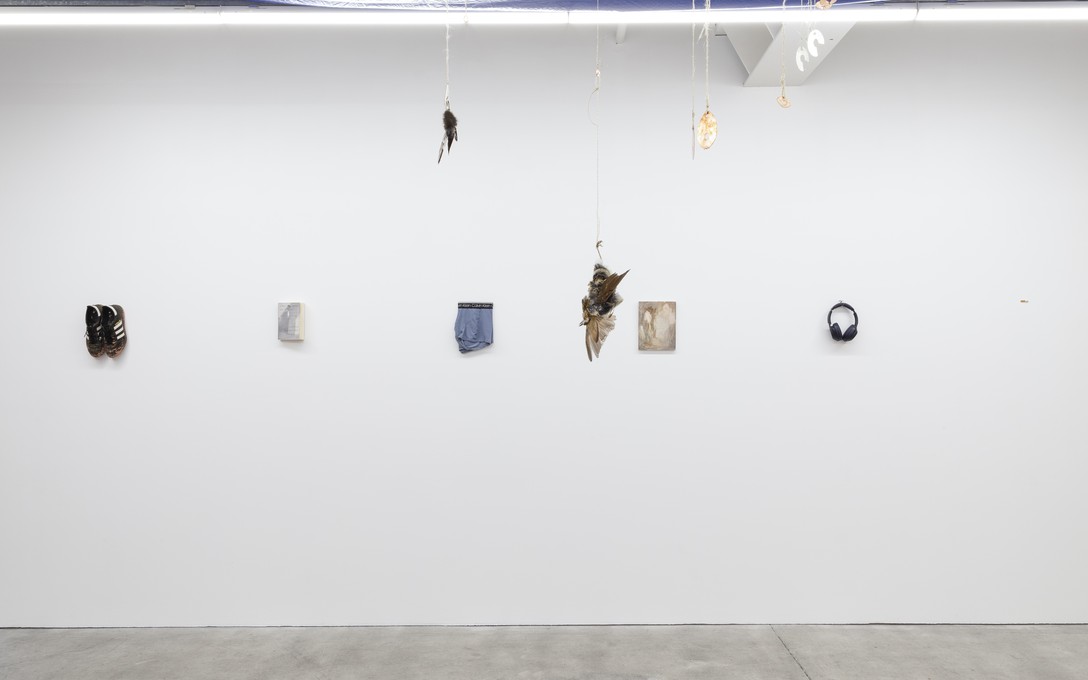
Frankie Matchitt-Millar, The Ethics of Witnessing, installation view. Image courtesy of Cheska Brown.
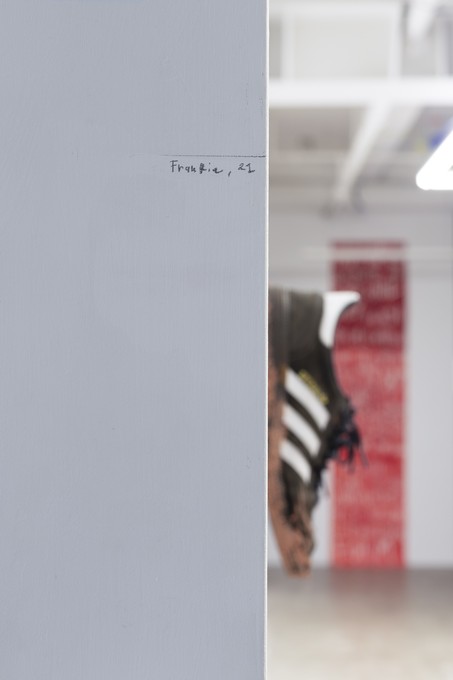
Frankie Matchitt-Millar, The Ethics of Witnessing, detail. Image courtesy of Cheska Brown.
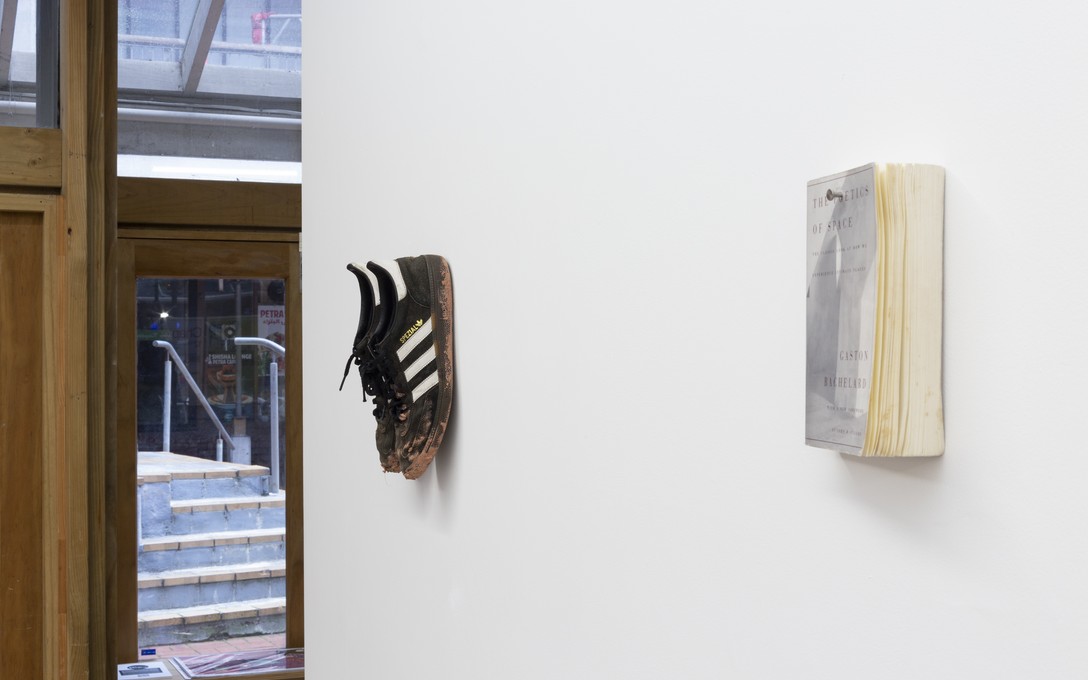
Frankie Matchitt-Millar, Adidas Special & Poetics of Space. Image courtesy of Cheska Brown.
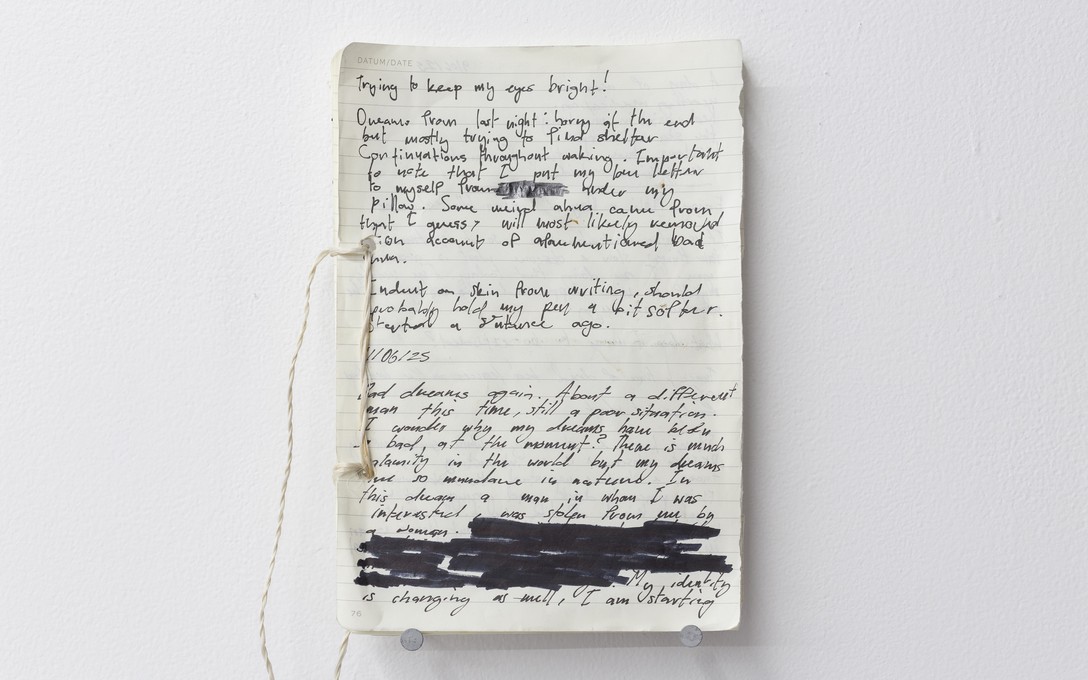
Frankie Matchitt-Millar, Read Me. Image courtesy of Cheska Brown.
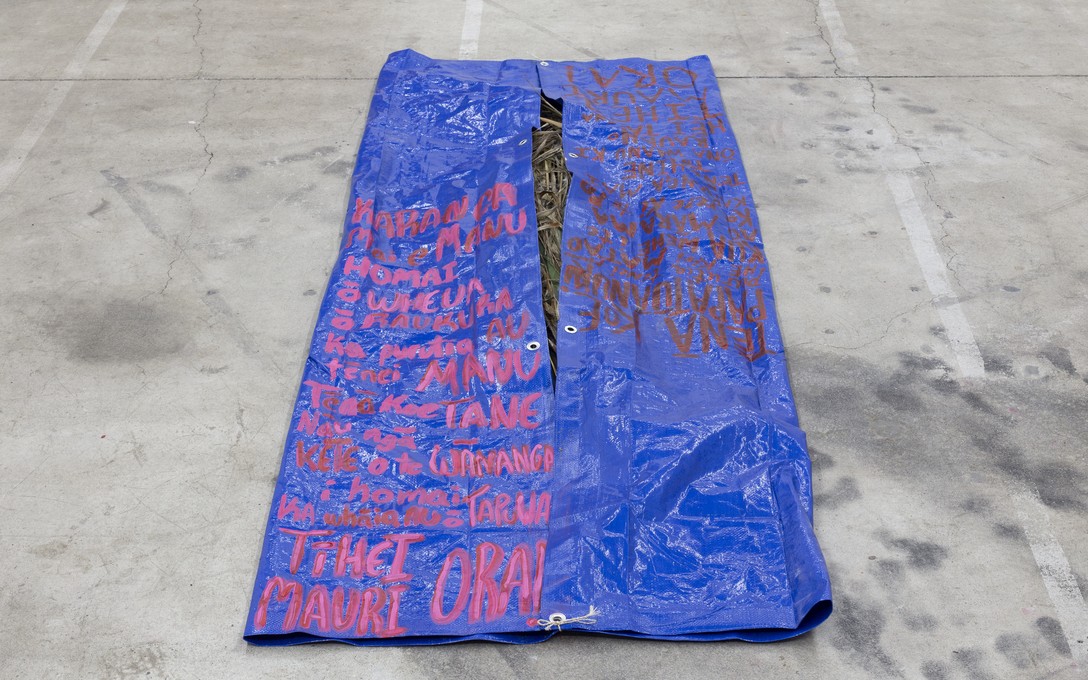
Aroha Matchitt-Millar, Tīwaiwaka takamiri turuma, he tangata kaikino. Image courtesy of Cheska Brown.
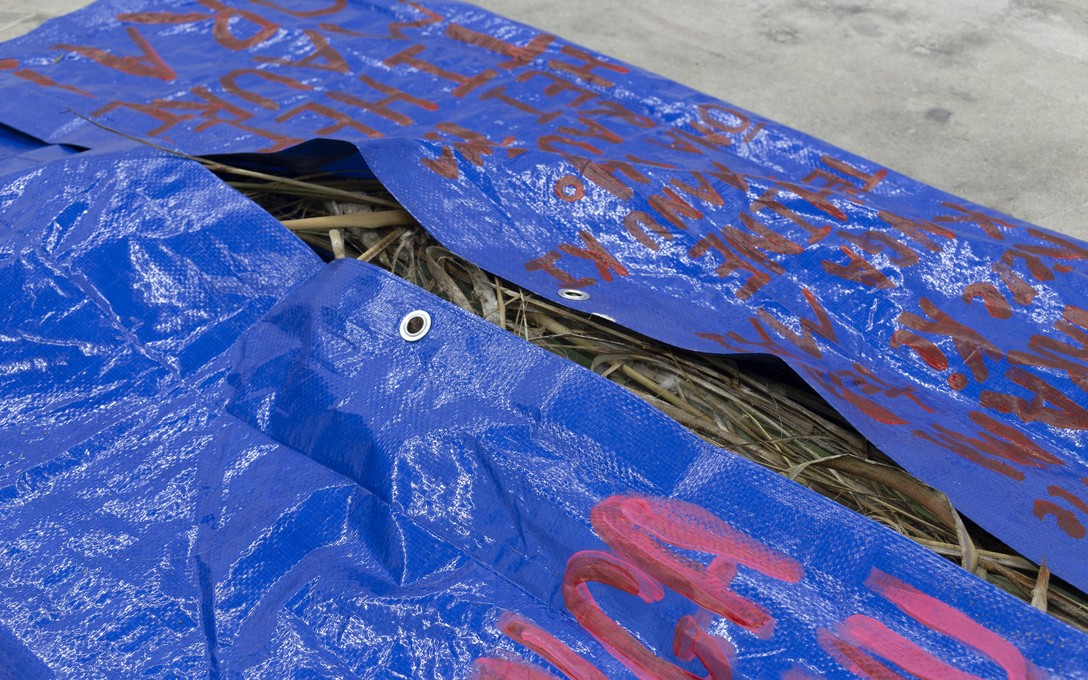
Aroha Matchitt-Millar, Tīwaiwaka takamiri turuma, he tangata kaikino. Image courtesy of Cheska Brown.
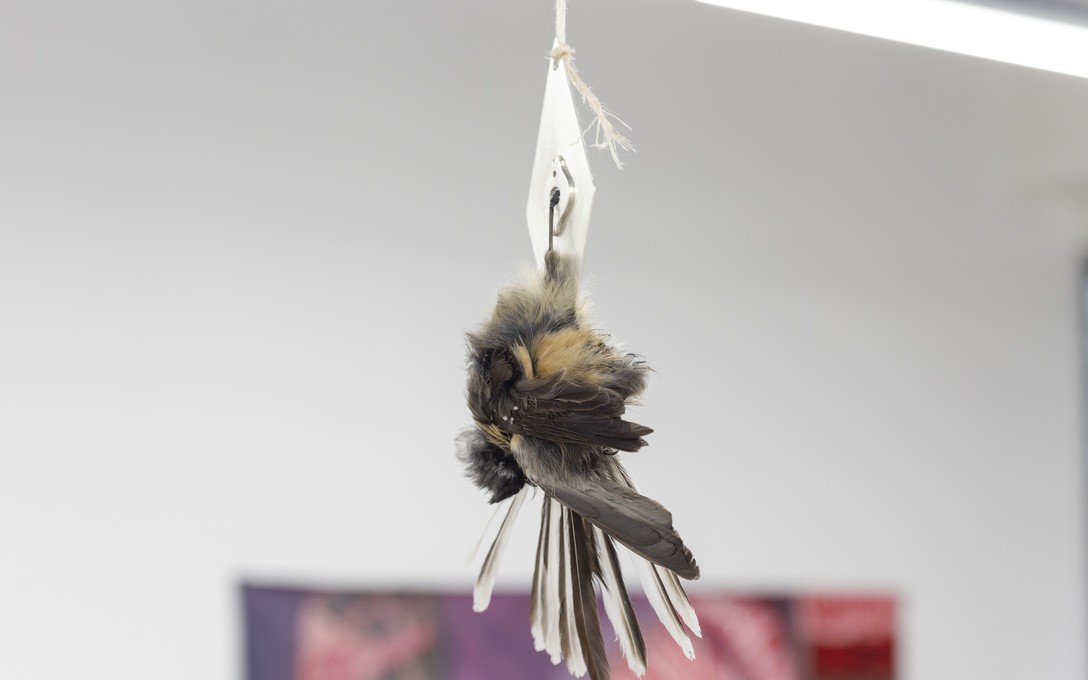
Aroha Matchitt-Millar, Tīwaiwaka takamiri turuma, he tangata kaikino. Image courtesy of Cheska Brown.
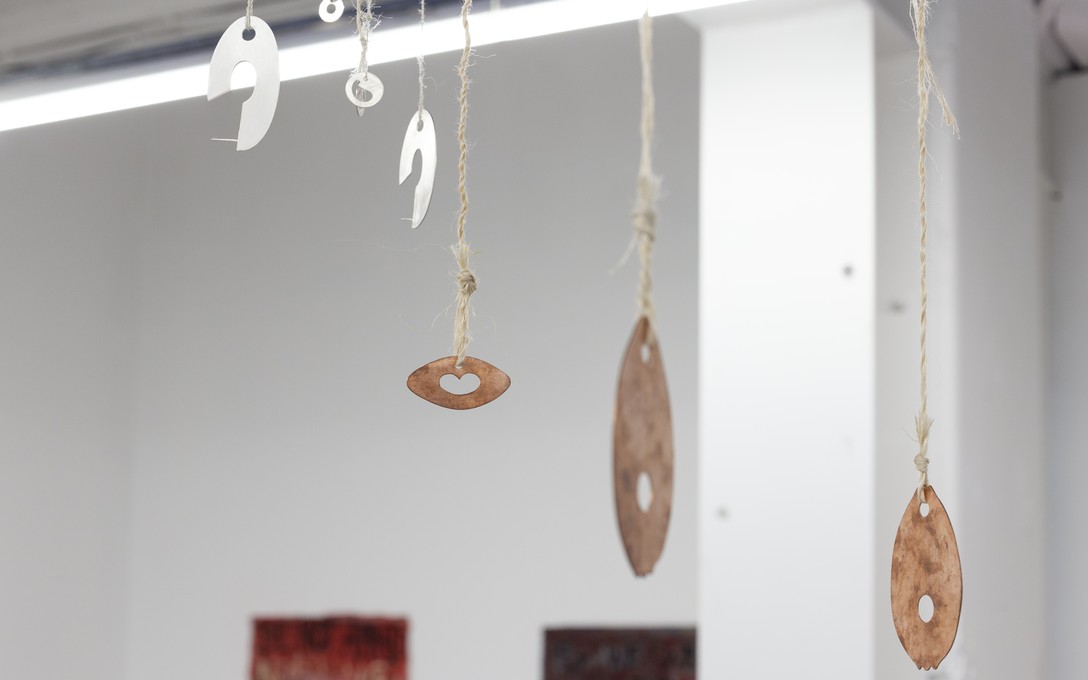
Aroha Matchitt-Millar, Tīwaiwaka takamiri turuma, he tangata kaikino. Image courtesy of Cheska Brown.
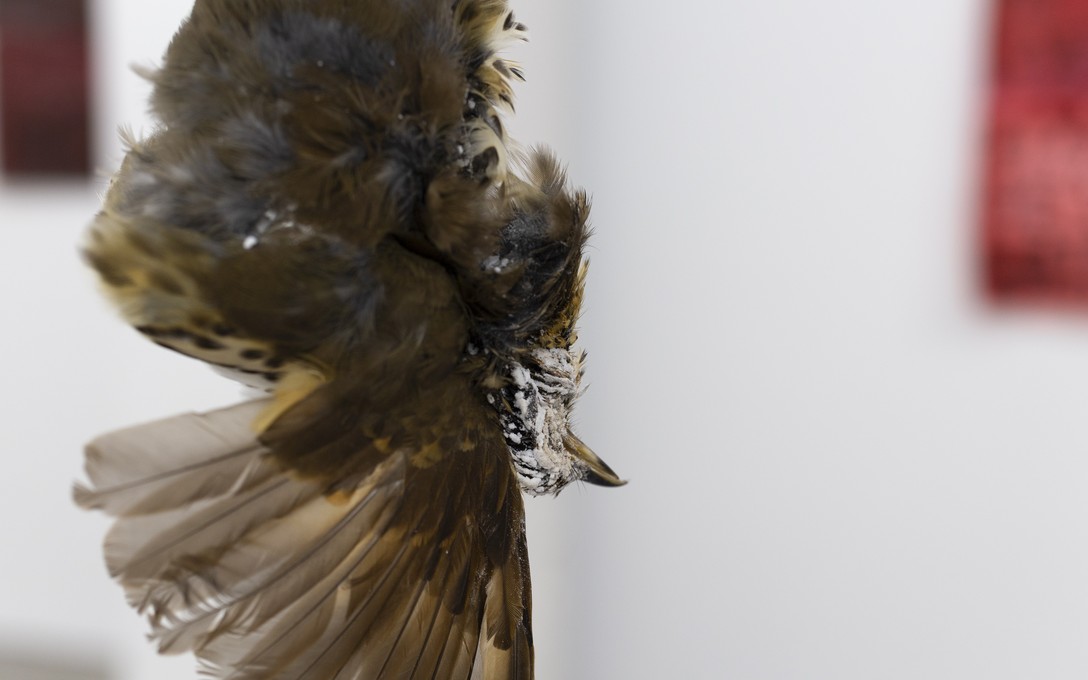
Aroha Matchitt-Millar, Tīwaiwaka takamiri turuma, he tangata kaikino. Image courtesy of Cheska Brown.

Aroha Matchitt-Millar, Tīwaiwaka takamiri turuma, he tangata kaikino and p Walters, Césaire at Ihumātao & angels and faggots. Image courtesy of Cheska Brown.
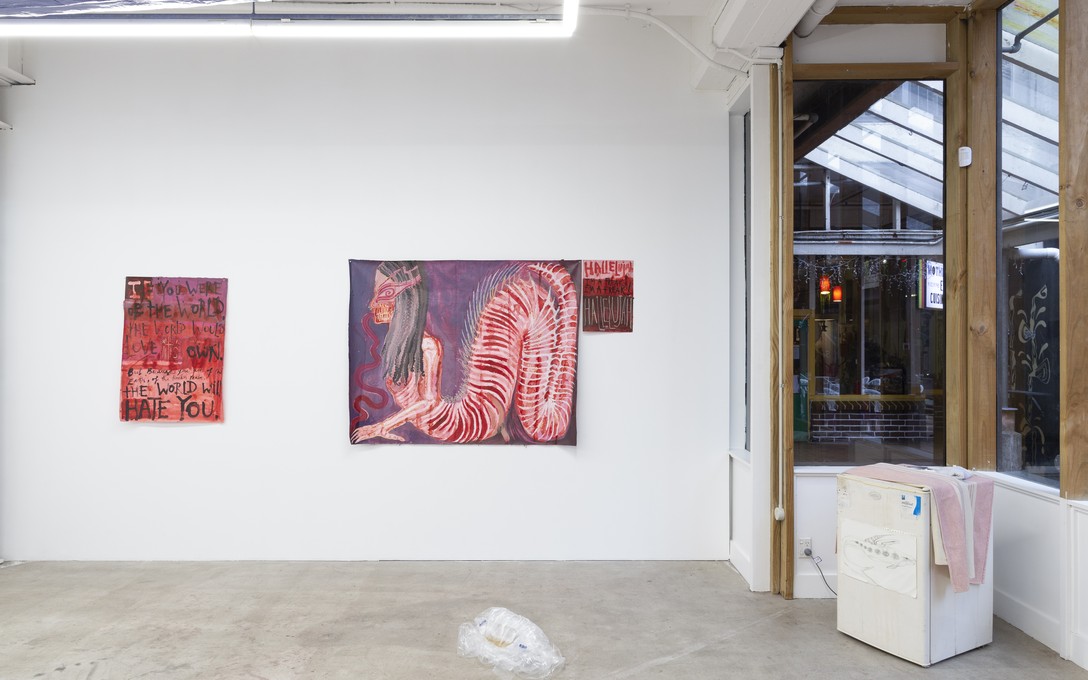
The Ethics of Witnessing, installation view. Image courtesy of Cheska Brown.
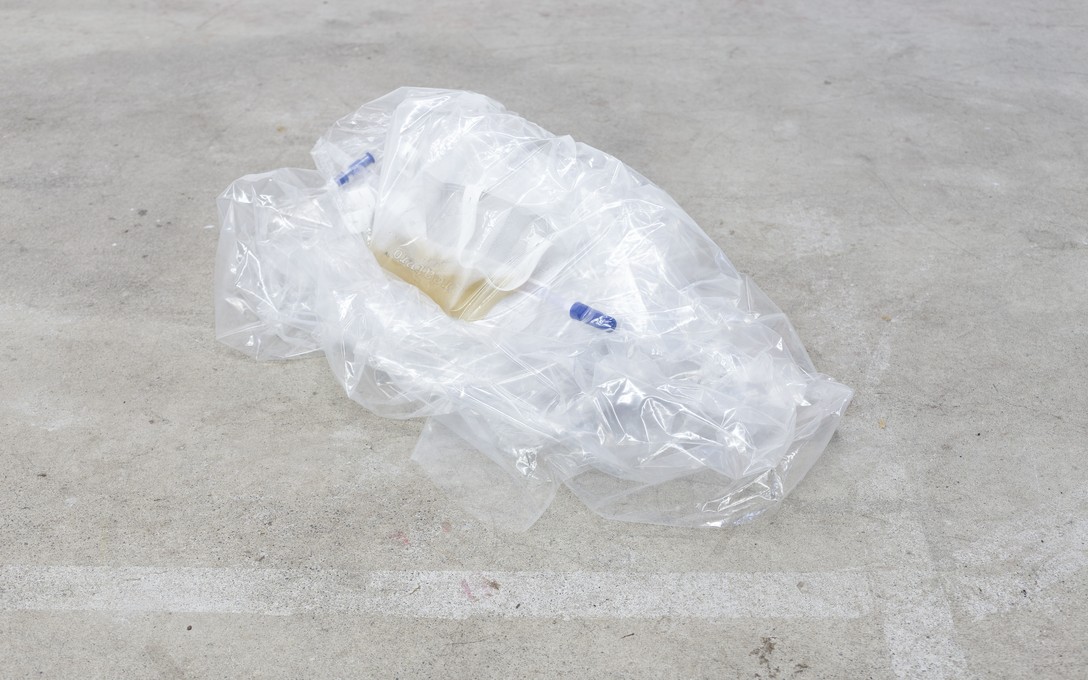
The Ethics of Witnessing, installation view. Image courtesy of Cheska Brown.
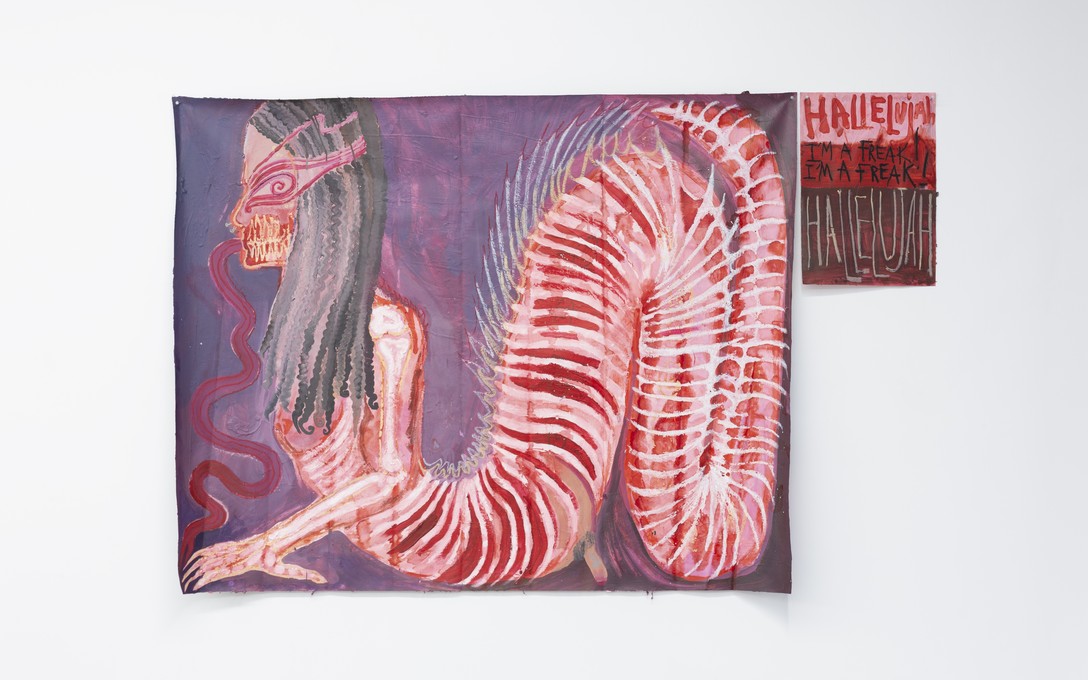
p Walters, Red Dragon or Tarakona Whero & Mother's Daughter. Image courtesy of Cheska Brown.
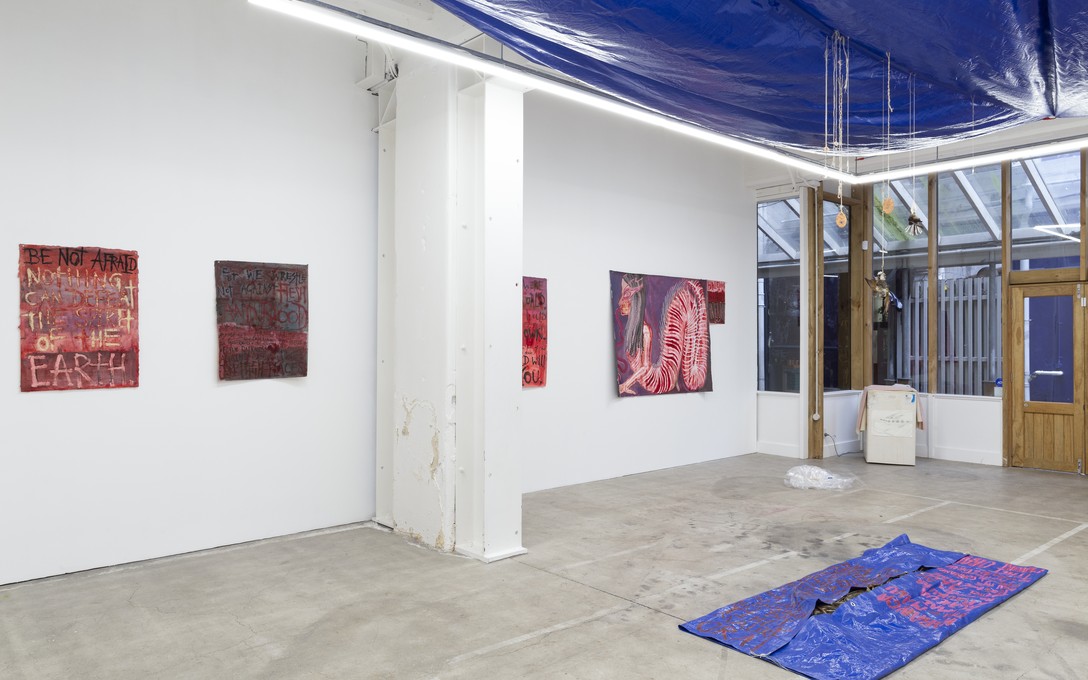
The Ethics of Witnessing, installation view. Image courtesy of Cheska Brown.
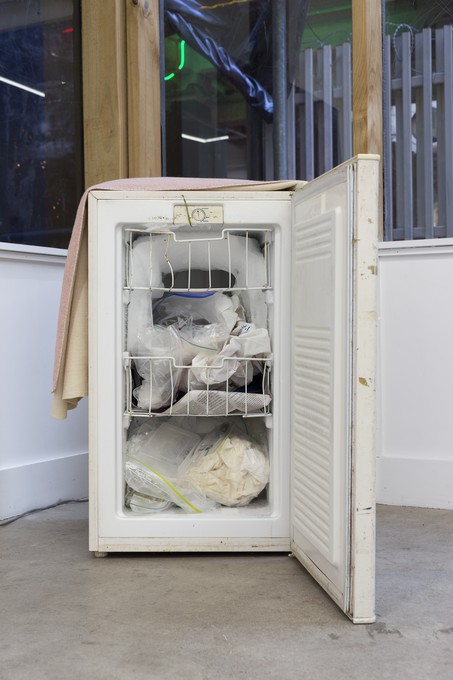
The Ethics of Witnessing, installation view. Image courtesy of Cheska Brown.
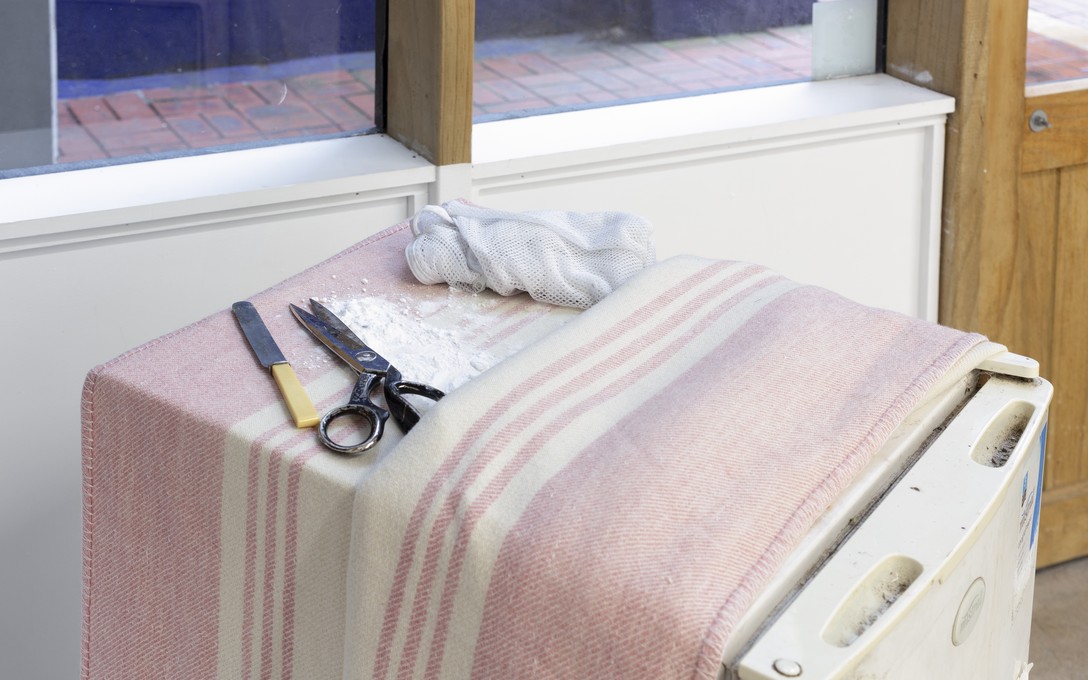
The Ethics of Witnessing, installation view. Image courtesy of Cheska Brown.
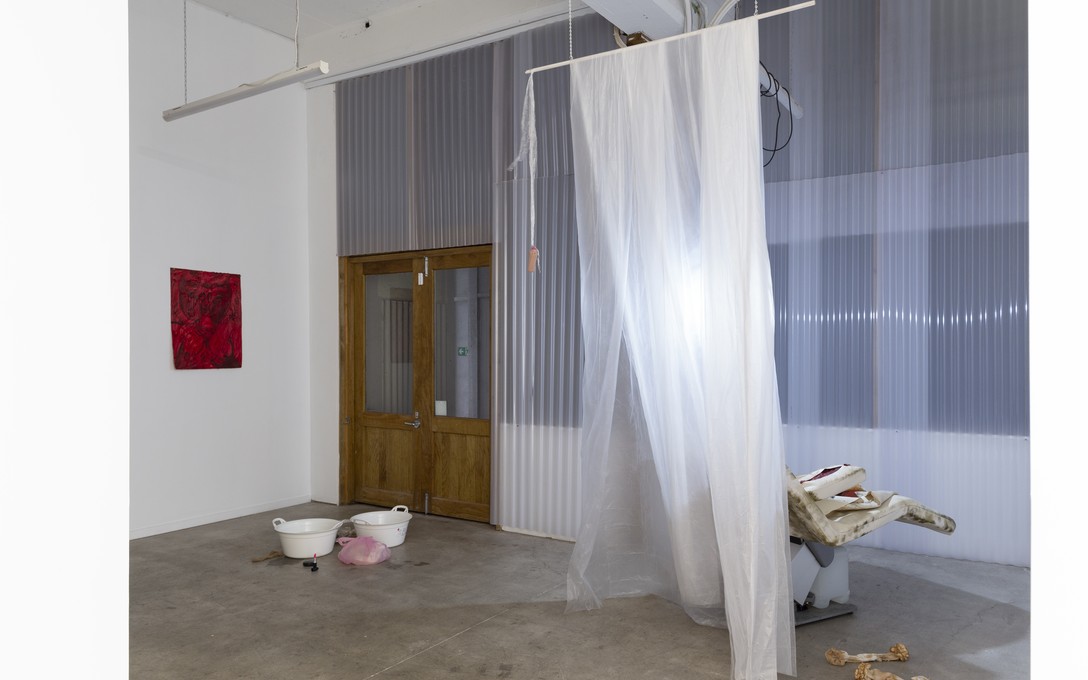
Fetishini, Skin & Liver, installation view. Image courtesy of Cheska Brown.
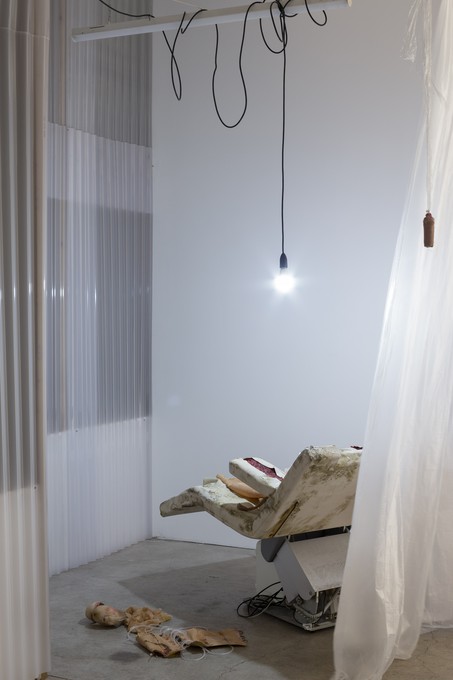
Fetishini, Skin, installation view. Image courtesy of Cheska Brown.
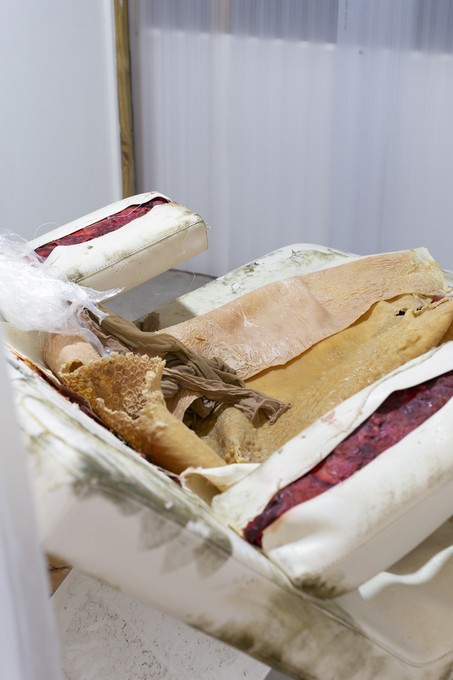
Fetishini, Skin, detail. Image courtesy of Cheska Brown.
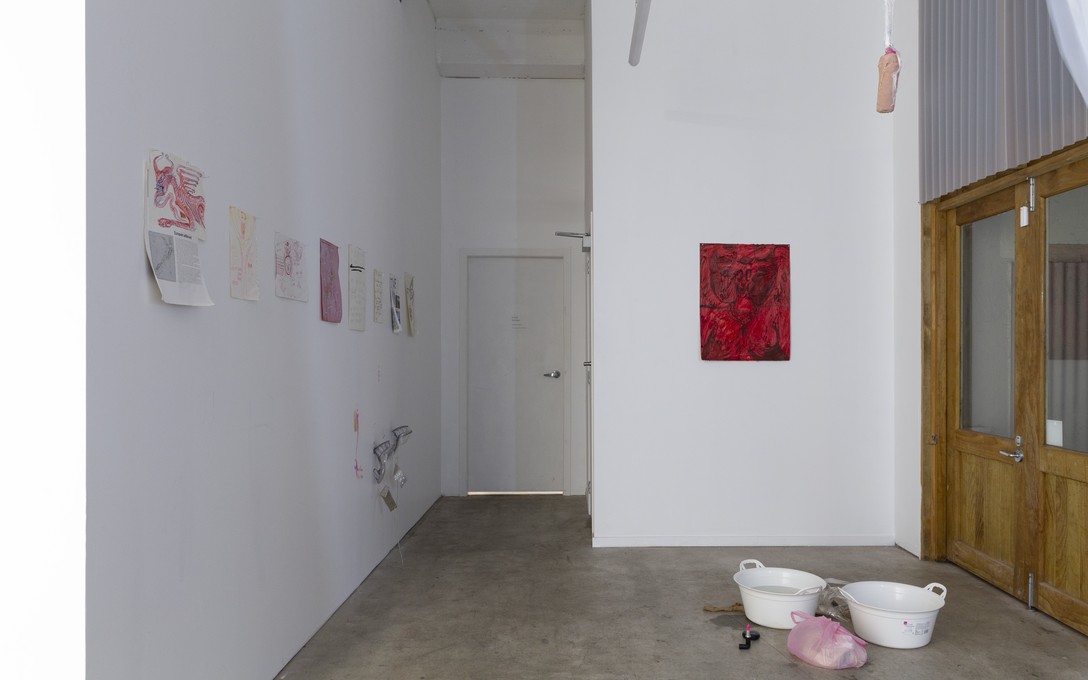
The Ethics of Witnessing, installation view. Image courtesy of Cheska Brown.

Fetishini, Liver, detail. Image courtesy of Cheska Brown.
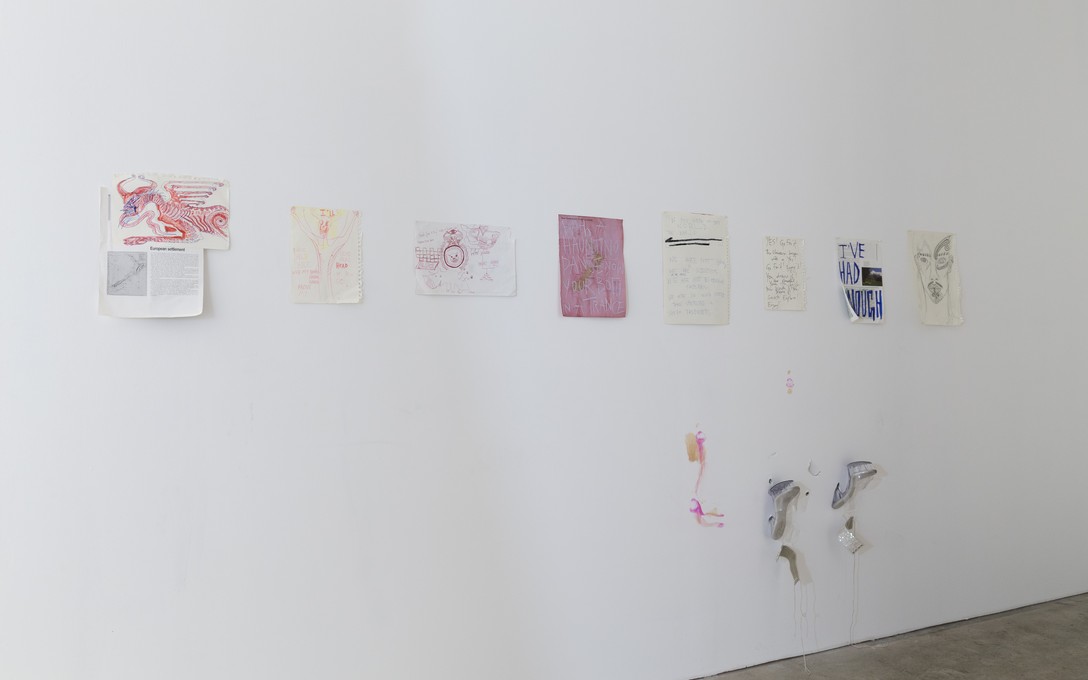
Fetishini and p Walters, The Ethics of Witnessing, installation view. Image courtesy of Cheska Brown.
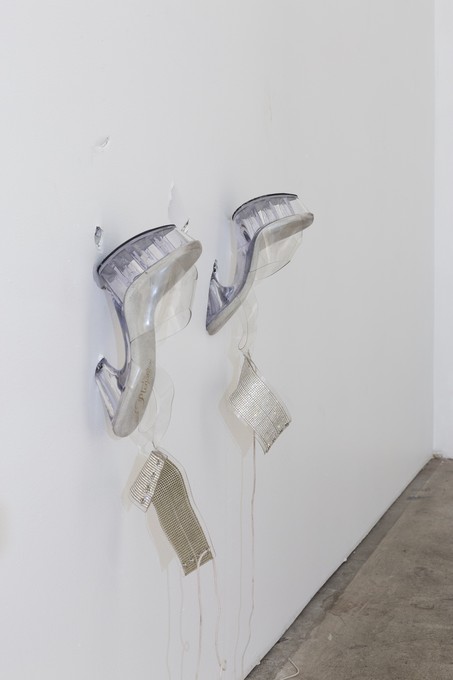
Fetishini, Liver, detail. Image courtesy of Cheska Brown.
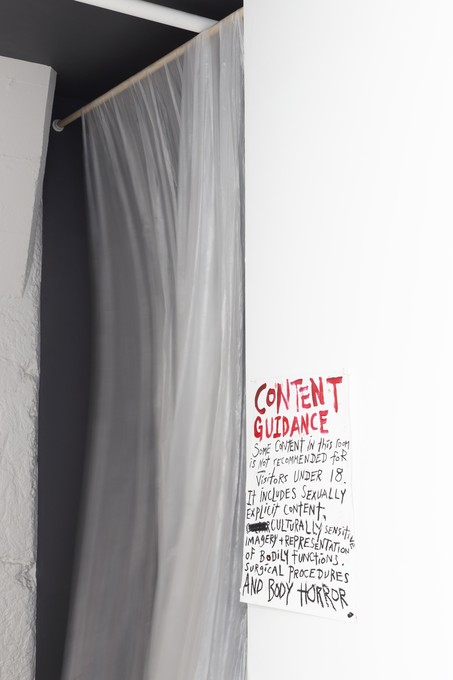
The Ethics of Witnessing, installation view. Image courtesy of Cheska Brown.
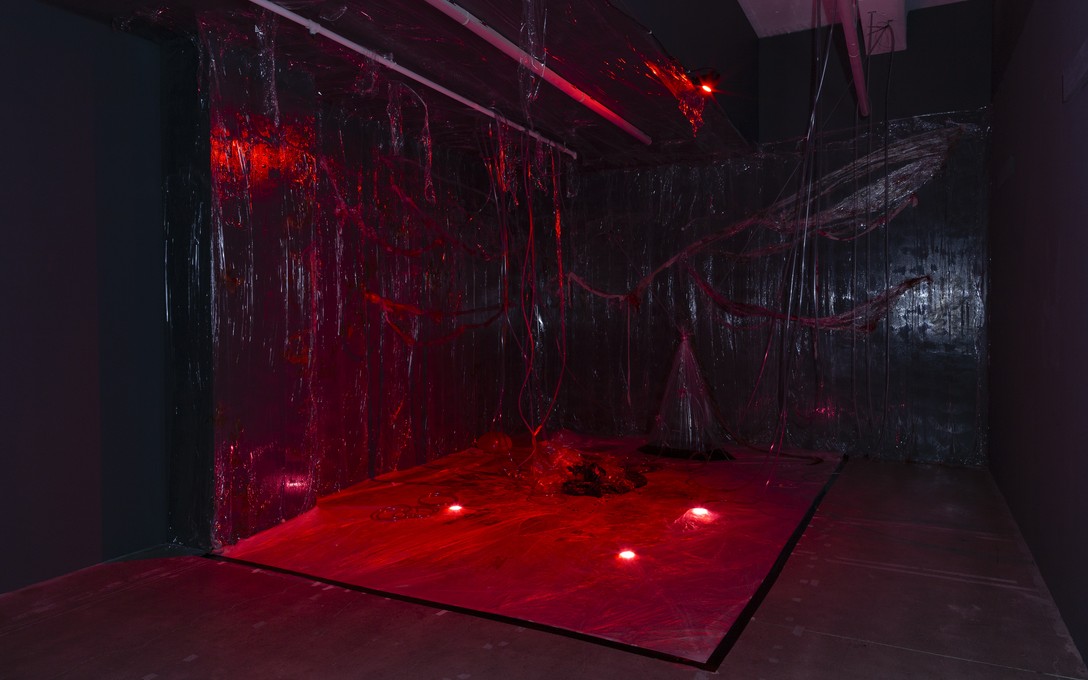
Fetishini, Blood, installation view. Image courtesy of Cheska Brown.
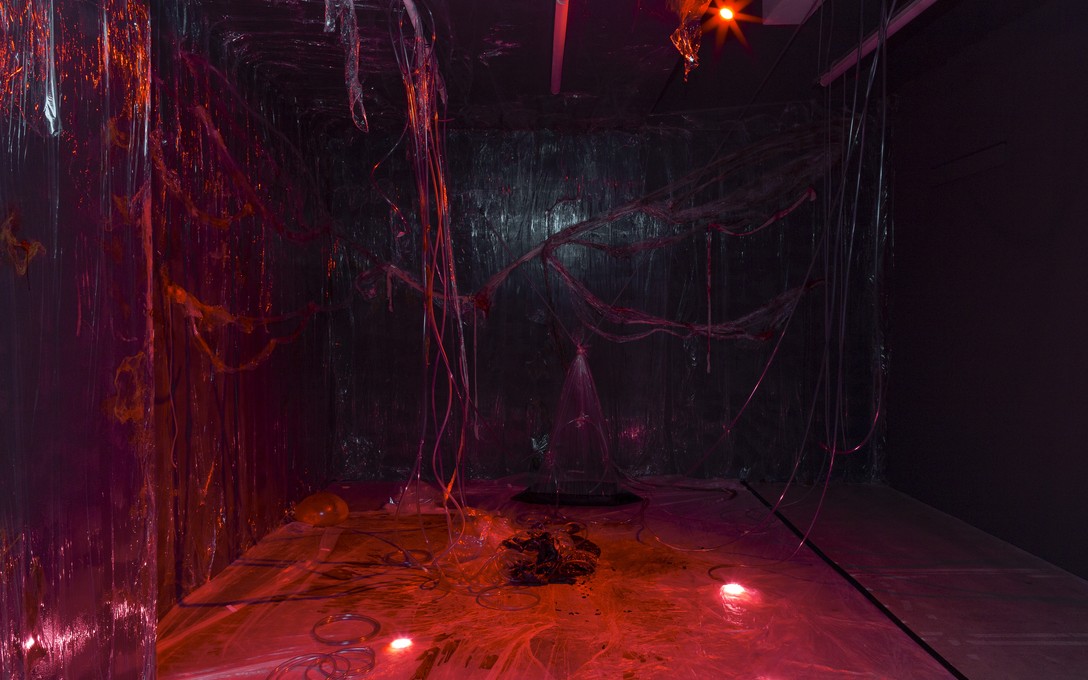
Fetishini, Blood, installation view. Image courtesy of Cheska Brown.
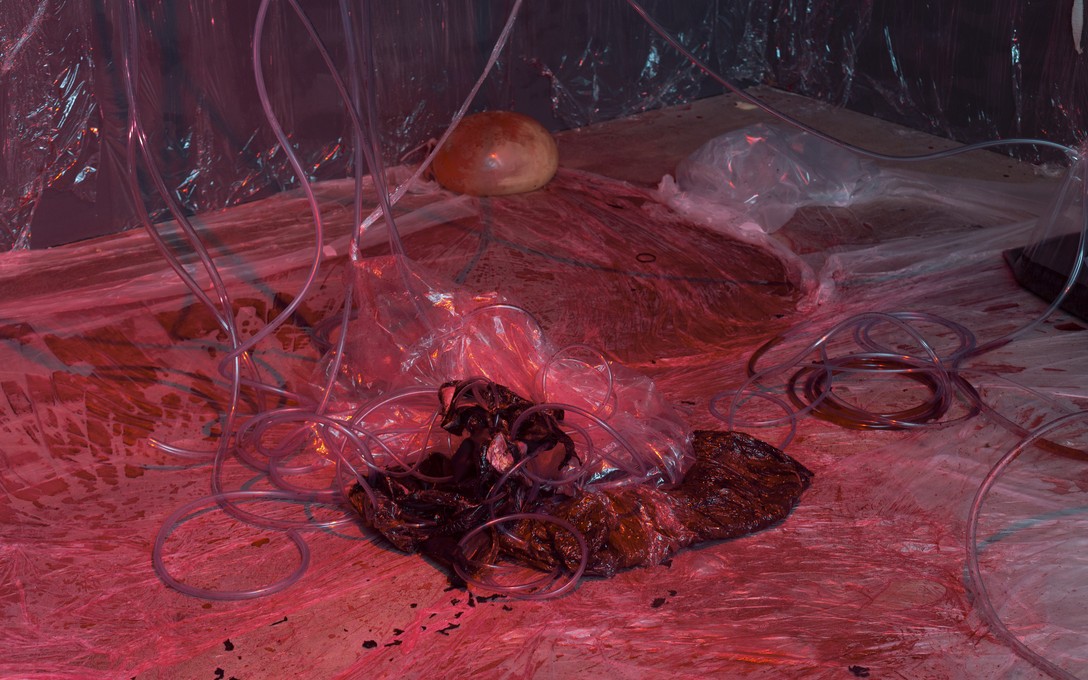
Fetishini, Blood, detail. Image courtesy of Cheska Brown.
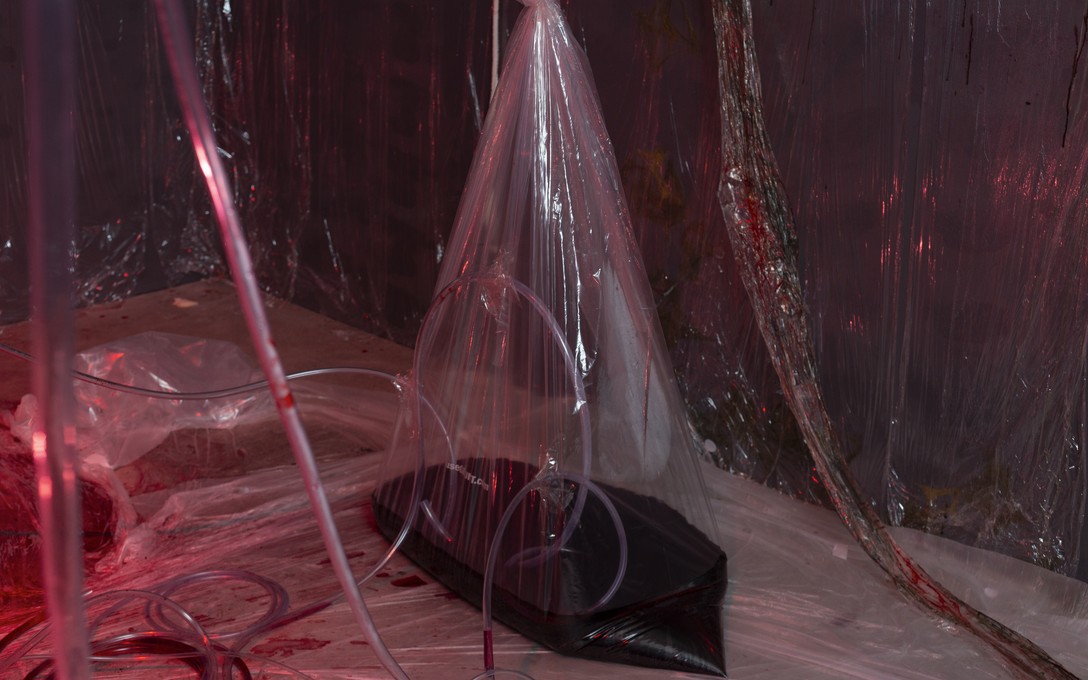
Fetishini, Blood, detail. Image courtesy of Cheska Brown.
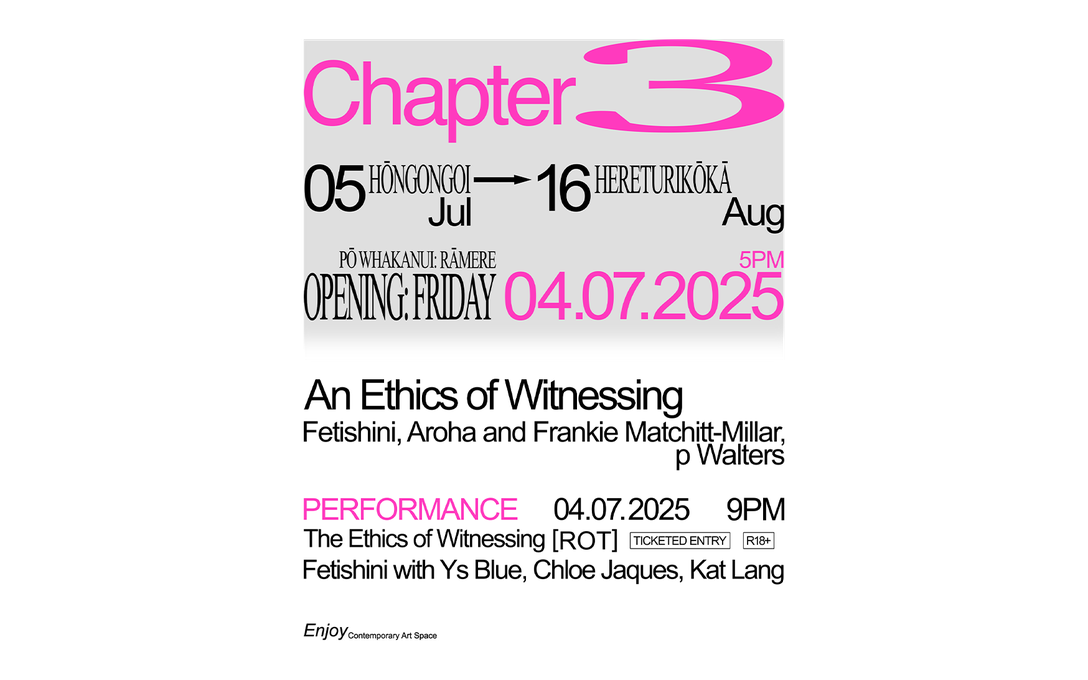
Graphic designed by Joe Locke.
ABOUT THE ARTISTS:
Fetishini is a queer, non-binary performance artist whose work navigates the borders of abjection, desire, and identity. Rooted in lived experiences of dysphoria, neurodivergence, and queer embodiment, their practice explores how we define ourselves by rejecting what is considered dirty, shameful, taboo, or threatening to bodily and psychic coherence.
Beginning their creative journey as a drag artist, Fetishini’s work has evolved into performance that entangles body horror, fetish, and emotional intensity. Navigating the slippery terrain where desire and revulsion coexist, Fetishini confronts sanitised cultural narratives about bodily coherence and identity.
Their performances are ritualistic encounters with what we are meant to disown—staging intimacy with shame, fetish, body horror, and emotional excess. In doing so, they offer a kind of exposure therapy through art: not to cure, but to coexist with what we are told to hide.
Aroha Matchitt-Millar (Ngāti Rangitihi, Te Whakatōhea, Tūhoe) is a multidisciplinary artist with strong foundations in contemporary jewellery and raranga. Her work is influenced by the practices her tīpuna used, intrinsically passed down through whakapapa.
Using feathers, feet, wings, and bones, Aroha creates contemporary jewellery, influenced by urban Māori 'Hori Chic' style. The intimacy of the process of skinning and pelting manu is both cathartic and repairing, recognizing the role colonisation had in separating Māori from these taonga while whatu-ing the strands of whakapapa back together. Her mahi is a rats tail reclamation to climb te ara a Whaititiri and have a cuppa with her nan.
Frankie Matchitt-Millar is a multidisciplinary artist based in Te-Whanganui-a-Tara. Through his work Matchitt-Millar explores his takatāpuhitanga alongside his Māoritanga, through embodied making. Connection to audience is an integral part of Matchitt-Millar’s making; reindigenising the realm of performance and creating accessible mahi to his community.
p Walters is a taniwha, local to the Kingdom of South Auckland and beyond, with wings and bones stretching across from Aotearoa and to various islands of Tonga. Their work reflects their dissidence to the colonial imagination and legacy of “new zealand” and their devotion to venerating their queer & othered body.
Graduating with BFA First Class Honours in 2022 from Waipapa Taumata Rau University of Auckland, they practice collectively & individually throughout the motu & Moana via curation, exhibition making, public programming, writing, connecting, and more.
